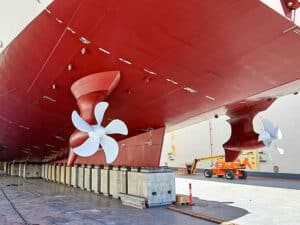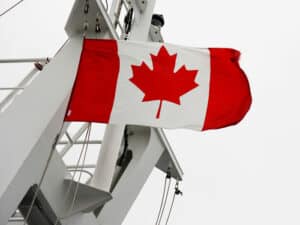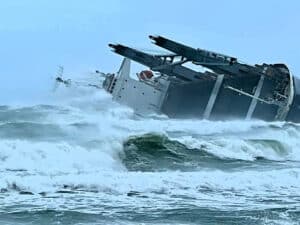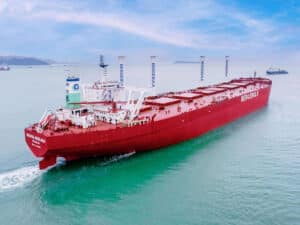
New York relents on ballast water reg deadline
Written by Nick Blenkey New York State Department of Environmental Conservation Commissioner Joseph Martens has filed comments with the U.S. Environmental Protection Agency indicating that New York will pursue a uniform, national ballast water standard that will leave in place the EPA’s current standards in New York for the remainder of EPA’s current Vessel General Permit through December 2013.
New York State Department of Environmental Conservation Commissioner Joseph Martens has filed comments with the U.S. Environmental Protection Agency indicating that New York will pursue a uniform, national ballast water standard that will leave in place the EPA’s current standards in New York for the remainder of EPA’s current Vessel General Permit through December 2013.
“New York remains concerned about the introduction and spread of invasive species in the state’s waterways and we hope that a strong national solution can be achieved,” DEC Commissioner Joe Martens said. “At the same time, shipping and maritime activity is critical to New York state and international commerce. A technically feasible national standard which recognizes the critical economic role played by our waterways is the only viable way to address the spread of destructive aquatic invaders through ballast water.”
EPA’s recent proposal for the next four-year term, December 2013 through December 2017, for its Vessel General Permit includes adopting a protocol that was set forth by the International Maritime Organization (IMO) in 2004. DEC submitted comments on EPA’s proposed standards for 2013-2017. To view DEC’s comments, visit: http://www.dec.ny.gov/docs/water_pdf/ballastltr022112.pdf
Commissioner Martens continued, “The EPA proposal can be strengthened to better protect against the harms associated with aquatic invasive species and take advantage of numerous recent, cost-effective advances in treatment technology. A strong, uniform national standard is the preferred approach to ensuring that vessels install and use achievable and cost-effective technology to treat ballast water discharges.”
DEC intends to continue to work with other states, such as California, Michigan and other Great Lakes states, and stakeholders to advocate that EPA and the Coast Guard adopt a more protective national approach to this widespread problem.
In DEC’s comments to EPA, Commissioner Martens proposed adopting a national standard with the following key elements:
- a 100 times IMO discharge standard implemented by June 1, 2016;
- a voluntary discharge standard of 10 times IMO by June 1, 2014;
- grandfather until 2024 vessels deploying 10 times IMO systems prior to June 1, 2014;
- continue to require ballast water ocean exchange and flushing; and
- require the use of any reasonable and effective management practices to limit aquatic invasive introductions prior to 2016.
According to the American Great Lakes Ports Association, the DEC action effectively eliminates onerous ballast water treatment requirements through the end of 2013. The agency’s ballast water regulations are the most stringent in North America and have been the topic of considerable controversy.
“New York’s decision effectively eliminates the unworkable ballast water rules put in place during the Paterson Administration. We applaud Governor Cuomo for protecting jobs and supporting the thousands of Americans who make their living in the maritime industry,” said Steve Fisher, Executive Director of the American Great Lakes Ports Association.
In December 2008, the NYDEC issued state regulations governing the discharge of ballast water from commercial vessels operating in New York’s jurisdiction. The regulations were promulgated under authority granted to the state by the federal Clean Water Act.
Under those rules, by August 1, 2013, all vessels operating in New York waters will be required to install environmental technology that can clean or treat ballast water to meet a water quality standard 100 times stronger than standards established by the International Maritime Organization (IMO) in 2004. No technology exists to meet that requirement. By January 2013, any vessels constructed after that date must install environmental technology that can treat ballast water to a level 1000 times stronger than the IMO. No technology exists to meet that requirement.
The maritime industry has argued that the regulations are unworkable and, if left unchanged, will result in economic harm to New York ports and maritime commerce traveling through New York waters on the St. Lawrence River destined for ports in Pennsylvania, Ohio, Indiana, Michigan, Illinois, Wisconsin, Minnesota, Ontario and Quebec.
A recent economic impact analysis (www.marinedelivers.com <http://www.marinedelivers.com> ) estimated that implementation of New York’s ballast discharge regulations would negatively affect over 72,000 jobs, more than $10 million in business revenue and over $1.4 million in federal, state/local and provincial taxes in the bi-national Great Lakes-St. Lawrence region.
Because of these impacts, the U.S. and Canadian federal governments – as well as the governments of several neighboring states and provinces – have encouraged the State of New York to moderate its position and harmonize its ballast water discharge rules with federal and international standards.
The shipping industry is committed to taking steps to minimize and eventually eliminate the movement of organisms via ballast water.
Today, vessels entering the Great Lakes region undergo the most stringent ballast management and inspection regulations in the world. All vessels entering the Great Lakes from abroad are required to exchange (pump out) their ballast water while still at sea and flush any empty tanks with ocean water. This two-pronged procedure helps to physically remove organisms from ballast tanks.
To ensure compliance, the U.S. and Canadian governments stop, board, inspect, and test every foreign ship entering the Great Lakes in Montreal – the gateway to the St. Lawrence Seaway. Since these protections were put in place in 2006, there have been no new discoveries of aquatic nuisance species in the Great Lakes.
The extended deadline announced today will allow time for NYDEC to work with affected stakeholders and craft permit requirements that are feasible, practicable and harmonized with federal law. Both the U.S. EPA and the U.S. Coast Guard are currently promulgating federal ballast water discharge regulations.
“The Great Lakes maritime industry looks forward to working with the NYDEC over the next year in crafting feasible ballast water regulations that continue to protect the Great Lakes environment,” said Steve Fisher.
February 23, 2012





Leave a Reply
You must be logged in to post a comment.